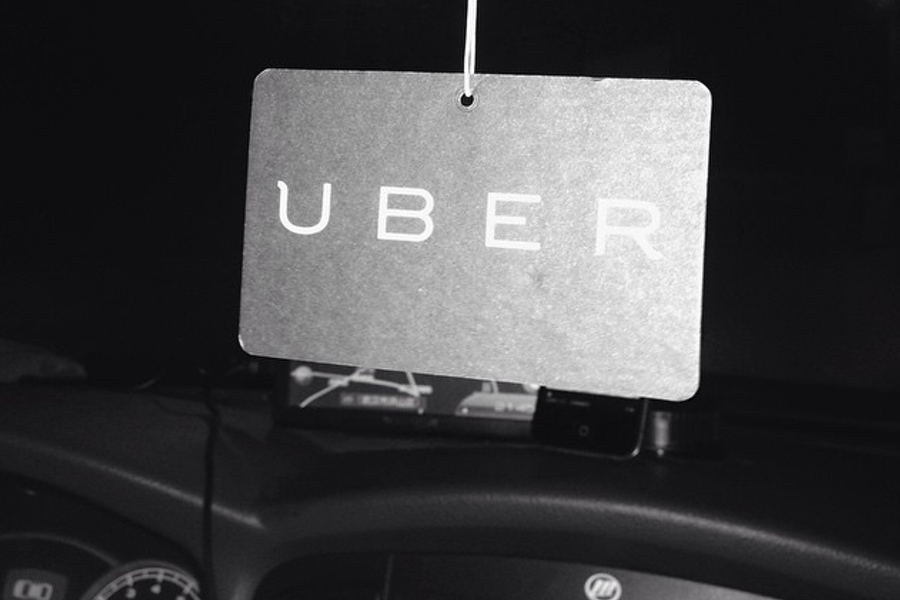
This story first appeared on RobertReich.org.
How would you like to live in an economy where robots do everything that can be predictably programmed in advance, and almost all profits go to the robots’ owners?
Meanwhile, human beings do the work that’s unpredictable — odd jobs, on-call projects, fetching and fixing, driving and delivering, tiny tasks needed at any and all hours — and patch together barely enough to live on.
Brace yourself. This is the economy we’re now barreling toward.
They’re Uber drivers, Instacart shoppers, and Airbnb hosts. They include Taskrabbit jobbers, Upcounsel’s on-demand attorneys, and Healthtap’s on-line doctors.
They’re Mechanical Turks.
The euphemism is the “share” economy. A more accurate term would be the “share-the-scraps” economy.
New software technologies are allowing almost any job to be divided up into discrete tasks that can be parceled out to workers when they’re needed, with pay determined by demand for that particular job at that particular moment.
Customers and workers are matched online. Workers are rated on quality and reliability.
The big money goes to the corporations that own the software. The scraps go to the on-demand workers.
Consider Amazon’s “Mechanical Turk.” Amazon calls it “a marketplace for work that requires human intelligence.”
In reality, it’s an Internet job board offering minimal pay for mindlessly-boring bite-sized chores. Computers can’t do them because they require some minimal judgment, so human beings do them for peanuts — say, writing a product description, for $3; or choosing the best of several photographs, for 30 cents; or deciphering handwriting, for 50 cents.
Amazon takes a healthy cut of every transaction.
This is the logical culmination of a process that began thirty years ago when corporations began turning over full-time jobs to temporary workers, independent contractors, free-lancers, and consultants.
It was a way to shift risks and uncertainties onto the workers — work that might entail more hours than planned for, or was more stressful than expected.
And a way to circumvent labor laws that set minimal standards for wages, hours, and working conditions. And that enabled employees to join together to bargain for better pay and benefits.
The new on-demand work shifts risks entirely onto workers, and eliminates minimal standards completely.
In effect, on-demand work is a reversion to the piece work of the nineteenth century — when workers had no power and no legal rights, took all the risks, and worked all hours for almost nothing.
Uber drivers use their own cars, take out their own insurance, work as many hours as they want or can — and pay Uber a fat percent. Worker safety? Social Security? Uber says it’s not the employer so it’s not responsible.
Amazon’s Mechanical Turks work for pennies, literally. Minimum wage? Time-and-a half for overtime? Amazon says it just connects buyers and sellers so it’s not responsible.
Defenders of on-demand work emphasize its flexibility. Workers can put in whatever time they want, work around their schedules, fill in the downtime in their calendars.
“People are monetizing their own downtime,” Arun Sundararajan, a professor at New York University’s business school, told the New York Times.
But this argument confuses “downtime” with the time people normally reserve for the rest of their lives.
There are still only 24 hours in a day. When “downtime” is turned into work time, and that work time is unpredictable and low-paid, what happens to personal relationships? Family? One’s own health?
Other proponents of on-demand work point to studies, such as one recently commissioned by Uber, showing Uber’s on-demand workers to be “happy.”
But how many of them would be happier with a good-paying job offering regular hours?
An opportunity to make some extra bucks can seem mighty attractive in an economy whose median wage has been stagnant for thirty years and almost all of whose economic gains have been going to the top.
That doesn’t make the opportunity a great deal. It only shows how bad a deal most working people have otherwise been getting.
Defenders also point out that as on-demand work continues to grow, on-demand workers are joining together in guild-like groups to buy insurance and other benefits.
But, notably, they aren’t using their bargaining power to get a larger share of the income they pull in, or steadier hours. That would be a union – something that Uber, Amazon, and other on-demand companies don’t want.
Some economists laud on-demand work as a means of utilizing people more efficiently.
But the biggest economic challenge we face isn’t using people more efficiently. It’s allocating work and the gains from work more decently.
On this measure, the share-the-scraps economy is hurtling us backwards.

I hope you found this article important. Before you leave, I want to ask you to consider supporting our work with a donation. In These Times needs readers like you to help sustain our mission. We don’t depend on—or want—corporate advertising or deep-pocketed billionaires to fund our journalism. We’re supported by you, the reader, so we can focus on covering the issues that matter most to the progressive movement without fear or compromise.
Our work isn’t hidden behind a paywall because of people like you who support our journalism. We want to keep it that way. If you value the work we do and the movements we cover, please consider donating to In These Times.
Robert B. Reich, Chancellor’s Professor of Public Policy at the University of California at Berkeley, was Secretary of Labor in the Clinton administration. Time magazine named him one of the ten most effective cabinet secretaries of the 20th century. He has written numerous books, including the bestsellers Aftershock and The Work of Nations. His latest is titled The System: Who Rigged It, How We Fix It.






